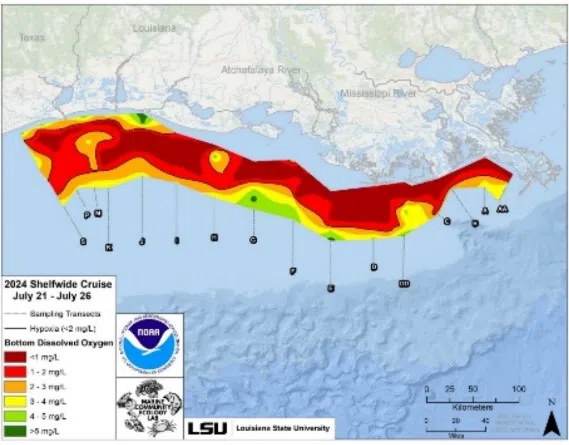The Gulf of Mexico’s dead zone, an area with critically low oxygen levels, is significantly larger this year, covering about 6,700 square miles making this the 12th largest dead zone in the 38 years of recorded measurements. LSU Oceanography Professor Nancy Rabalais says this hypoxic zone, is mainly caused by nutrient pollution from agriculture and wastewater coming down the Mississippi River, and severely affects marine life.
“We need to pay more attention to nutrient reduction coming off the watershed into the Mississippi River,” Rabalais said.
The 2024 measurement by NOAA is nearly double the target size set by environmental agencies. Excess nutrients, particularly nitrogen and phosphorus, lead to algal blooms that deplete oxygen when they decompose, creating inhospitable conditions for fish and other aquatic species.
“And its never just one thing. It’s not just the discharge. It’s just not the nutrient load. Its a combination of everything that makes this dead zone in the Gulf.”
The state and federal partnerships aim to reduce the dead zone’s average size to fewer than 1,900 square miles by 2035. The current five-year average, however, stands at 4,289 square miles.
“You’d have to shut off the whole flow of the Mississippi River to make a difference and that’s not going to happen.”
This year’s expansion underscores the persistent challenge of managing agricultural runoff and protecting marine ecosystems.








Comments